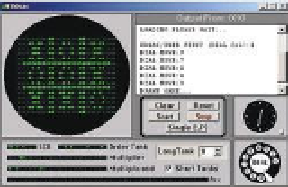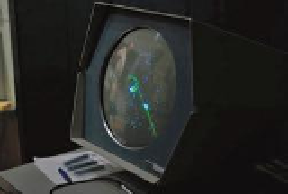Game Development Reference
In-Depth Information
1940-1970: THE SILENT ERA OF VIDEO GAMES
From the start, video games were made by computer programmers, the people who had the most access
to the technology. Video-game development on university mainframe computers began in the late
1950s but blossomed in the early to mid-1970s. Because these games were not distributed commercially
or regarded as serious endeavors, records remain of only the most popular of these games. The
programmers who wrote these games—usually students—did so illicitly on expensive university-owned
computers, so they were not eager to advertise the results. These explorations, however, became part of
the DNA of the modern video-game industry.
OXO (1952)
In 1952, A.S. Douglas at the University of Cambridge developed
OXO
, a
graphical version of tic-tac-toe (or noughts and crosses), to demonstrate
his thesis on human-computer interaction. In
OXO
, the player competed
directly against the EDSAC (Electronic Delay Storage Automatic
Calculator), a computer that used a cathode-ray tube to create a visual
display of memory contents.
A reproduction of
OXO
(noughts and
crosses), originally designed in 1952.
Spacewar!
(1961)
Spacewar!
was a two-player game in which each player i red at the
other from a spacecraft the player controlled. A star in the center of the
screen created an obstacle for the crafts. Considered the i rst inl uential
computer game,
Spacewar!
was eventually distributed with certain new
mainframe computers and traded on the (then) primitive Internet.
Magnavox Odyssey (1972):
The Earliest Home Video Console
Spacewar!
(1962) is one of the most well-
known early mainframe-based computer
games.
Credit:
Joi Ito, Wikimedia.
In 1966, Ralph Baer, who had emerged as a video game pioneer in the
1950s, created the Magnavox Odyssey, the i rst home console game
system, in 1972. Although it had no sound, the tennis game available
with this system became the inspiration for the smash hit arcade game
Pong
.
1970-1980: Early Arcade Games and
Consoles
As we move into the 1970s we begin to hear the i rst primitive bleeps
and bloops made by the i rst arcade games. At this point these sounds
are created with hardware chips and the sounds are programmed using
Magnavox Odyssey, the i rst commercial
game console, designed by Ralph Baer.
The tennis game it featured was the main
inspiration for Atari's
Pong
.



































